Moon Monday Issue #47
NASA astronauts on Moon missions will wear commercial spacesuits, China building a super heavy-lift rocket to send humans to the Moon, mapping permanent lunar shadows with AI, and more lunar updates.
Highlight
NASA is requesting proposals from U.S companies to make next-generation spacesuits that the agency will commercially purchase for use by astronauts on the International Space Station and on and around the Moon. NASA will continue to build in-house xEMU suits with traditional government contracts—whose slow development has already delayed their first Artemis human landing to at least 2025—but will simultaneously buy and use commercial suits and associated services. Proposals are due by December 1, 2021, and NASA will award one or more companies firm, fixed-price contracts in April 2022. NASA wants to demonstrate use of the first commercial-suit spacewalk at the International Space Station by 2023.
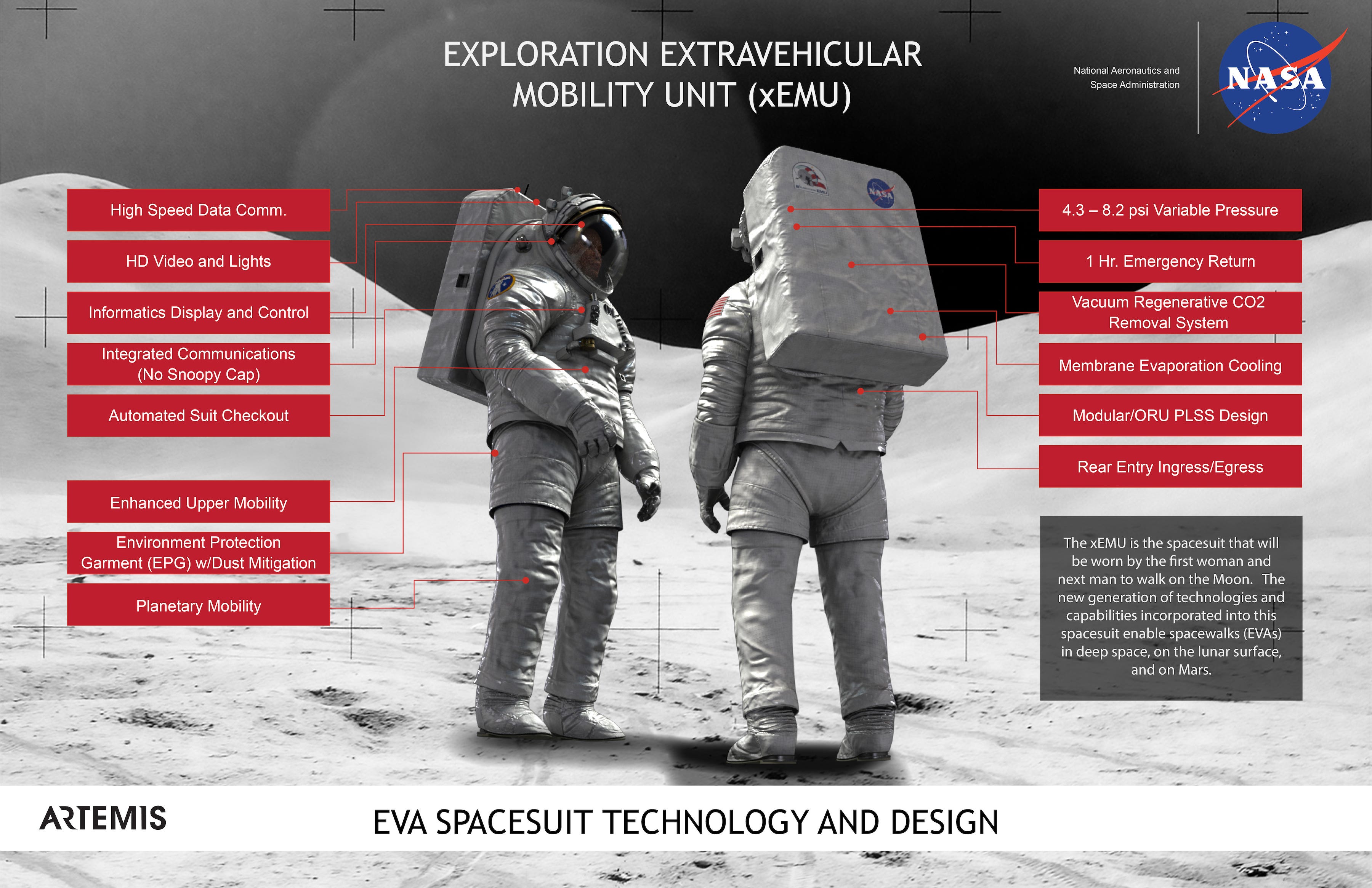
To accelerate the development of commercial suits, NASA is making available its technological progress with the xEMU suits to all bidders to build on as they like. In its System Requirements document, NASA has detailed minimum requirements and performance expectations from the new suits, some notable ones being:
- Support six two-person spacewalks on the Moon during initial Artemis missions. After astronauts come back from spacewalks, the suits should release less than 100 grams of notorious lunar dust into the cabin to keep things safe.
- More and longer duration spacewalks on future Artemis missions that will focus on sustaining human presence on the Moon.
- Now for the most interesting part, NASA wants astronauts to explore the scientifically-valuable permanently shadowed regions on the Moon’s south pole. As such, the suits should let astronauts enter such regions having temperatures well below -180 degrees Celsius and function nominally for at least 2 hours.
This moves sees NASA double down on its commercial model bet to sustain Moon exploration, following its decision to purchase commercial robotic and crewed lunar landers, surface infrastructure, and more.
Exploration
Last week, NASA initialized plans to commercialize another aspect of Moon exploration: Spacecraft communications and navigation. NASA asked U.S companies for information on how they can provide communications to the agency’s lunar spacecraft as a commercial service. NASA also wants commercial lunar satellites to relay communications between surface hardware and Earth, something especially useful for missions on the Moon’s farside and poles. Indeed, an upcoming NASA-funded commercial landing mission at the farside Schrödinger crater in 2024 fits the requirement. NASA is also interested in satellites providing position & navigation services, following ESA’s Moonlight initiative.
Using the U.S. Freedom of Information Act, The Verge obtained a lightly redacted copy of NASA’s legal filings against Blue Origin. Dated May 26, meaning before the recent Blue-Origin-filed lawsuit, it defends the agency’s decision to pick SpaceX as the crewed lunar lander provider for the first Artemis surface mission. In essence, NASA said that Blue Origin gambled with their door-in-the-face bid and lost. They “made an assumption about NASA’s budget, built its proposal with this figure in mind, and also separately made a calculated bet that if NASA could not afford Blue Origin’s initially-proposed price, the Agency would select Blue Origin for award and engage in post-selection negotiations to allow Blue Origin to lower its price. All of these assumptions were incorrect.”
On September 30, NASA and Aerojet Rocketdyne completed testing an RS-25 developmental engine after a nearly year-long seven-test series run. Four older versions of RS-25 engines currently power the core stage of NASA’s SLS rocket, which will regularly carry humans to lunar orbit as part of the agency’s Artemis program. The new engine—to be used post-2025 on Artemis IV, V, and beyond—is built with advanced manufacturing techniques to reduce cost and build time, the former by over 30 percent. Given that the SLS rocket currently costs over $2 billion per flight, and each RS-25 engine a fiery $146 million, any price reduction is welcome.
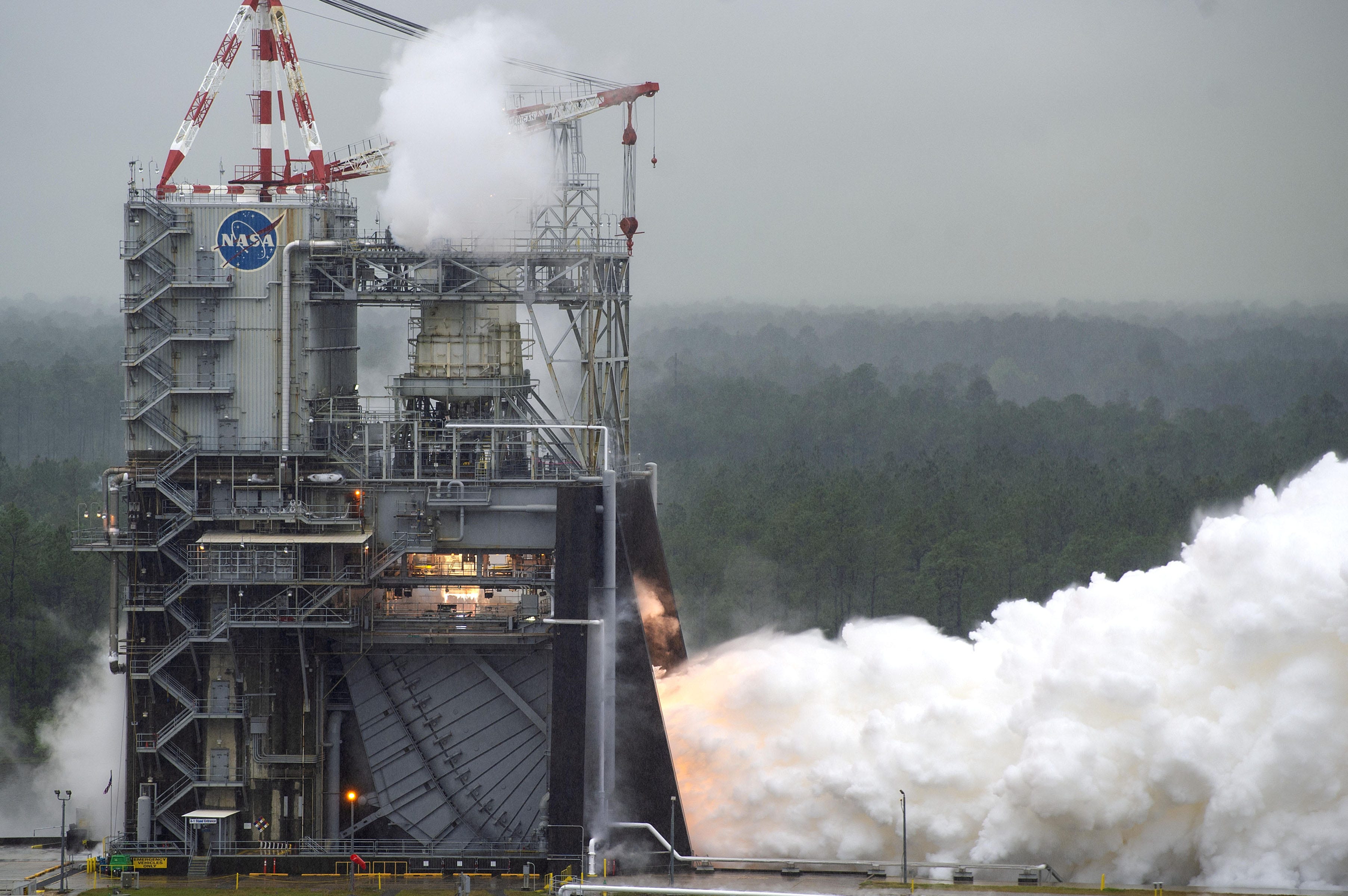
At the 13th Zhuhai Airshow, China showcased a number of elements of its future human Moon landing missions, including two super heavy-lift rocket models and the return capsule from its new crew spacecraft prototype test. While China hasn’t yet officially approved a human Moon landing project, it’s certainly building its enabling capabilities. Andrew Jones reports two such major updates that came out of the event.
- China is building a new super heavy-lift rocket purpose-built to send humans to the Moon. Capable of launching 70,000 kilograms to low Earth orbit and 27,000 kilograms on a trajectory to the Moon, it’s nearly thrice the capacity of China’s current largest rocket, the Long March 5, and SpaceX’s Falcon 9. No target launch date for the crew rocket is known but the word on the street is that it could launch taikonauts to the Moon before 2030.
- Hardware development for the previously known super heavy-lift rocket Long March 9 is progressing well. It’s capable of launching 140,000 kilograms to low Earth orbit, and 50,000 kilograms on a trajectory to the Moon. China is now expecting the rocket’s first launch in 2028, two years earlier than previously planned. China intends to use the Long March 9, at least initially, to deliver huge amounts of cargo for their International Lunar Research Station (ILRS) Moonbase, while the as-yet-unnamed crew rocket will fly humans.
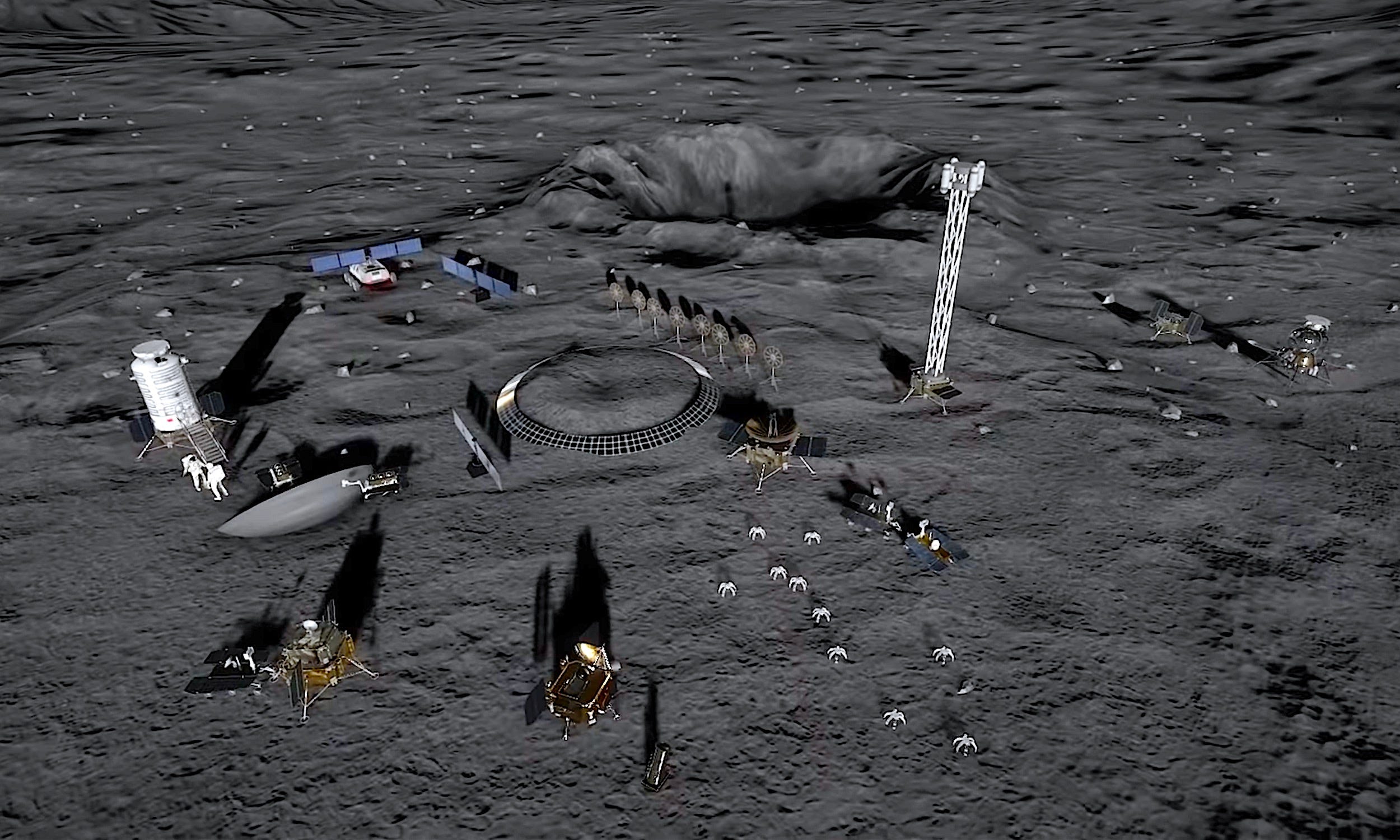
Relatedly, China and Russia formulated a Declaration for ILRS. The Declaration clarifies the project’s general principles and how other countries and international entities can participate. Experts from ESA, Malaysia, Thailand, the United Nations Office for Outer Space Affairs, and Asia-Pacific Space Cooperation Organizations were present, and provided their feedback. China and Russian will present the final ILRS Declaration to the international space community during the 72nd International Astronautical Congress scheduled for October 25-29 this year in Dubai.
In light of the upcoming establishment of the African Space Agency and related policy initiatives, new research by Ruvimbo Samanga considers an economic model in which African countries can engage in Moon exploration and grow.
Science
Not many space enthusiasts know this, as far as I can tell, but NASA’s Lunar Reconnaissance Orbiter (LRO) and ISRO’s Chandrayaan 2 orbiter can actually see inside permanently shadowed regions on the Moon, even though no sunlight directly reflects off of them. These orbiters detect incredibly dim light that is first scattered by nearby terrain into shadowed regions and then reflected off to space.
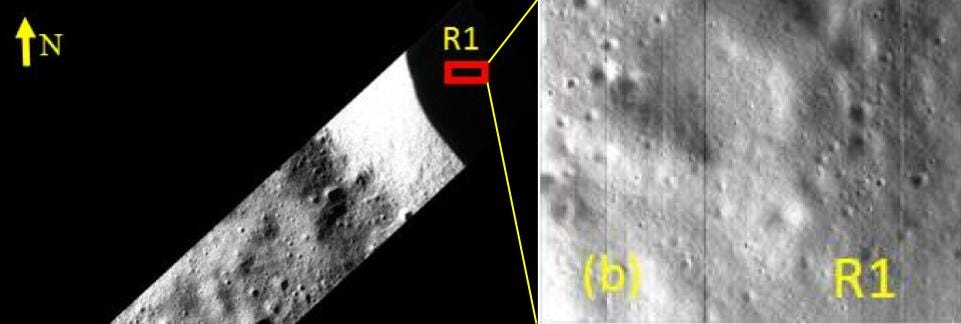
As impressive as the capability is, their cameras simply aren’t sensitive enough to help meticulously plan landing and roving missions in and around such regions, something required to access water ice and other resources thought to reside there, something central to future lunar exploration plans by space entities worldwide. Now European and U.S. researchers have tested their AI algorithm trained on over 70,000 LRO images to remove excessive noise and let us see shadowed regions with 5 to 10 times better resolution.
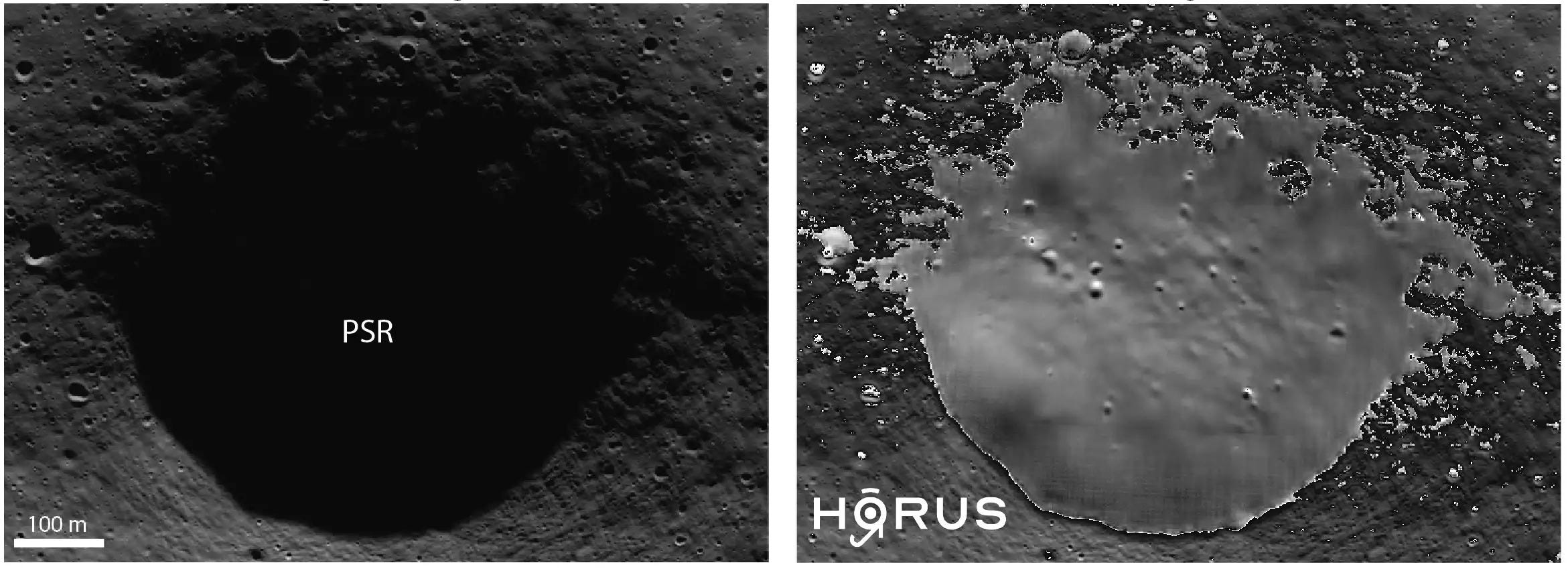
The researchers showcased over a dozen denoised shadowed craters, three of which happen to lie within the landing region of NASA’s water-mapping VIPER rover scheduled for launch in 2023. The algorithm helped identify craters and boulders within shadowed regions down to 3 meters in size for the first time, which is also the scale of detail needed to plan rover and human traverses on surface missions. With its utility demonstrated, the researchers will next use the algorithm to see as many shadowed regions as possible to better map the Moon’s poles. The researchers have also published technical details on how the algorithm works.
On a very related note, NASA’s ShadowCam camera onboard South Korea’s upcoming KPLO lunar orbiter will image permanently shadowed regions with at least 200 times more sensitivity than LRO. This will allow it to see a shadowed region on the Moon as if it was sunlit, map terrain at up to 1.7 meters per pixel, and help locate water ice deposits and other such resources based on how they reflect light. This will tell us how abundant and accessible these resources are—a crucial step towards safely and affordably planning future missions to the Moon’s poles and building sustainable habitats. I wonder what the AI denoising algorithm paired with ShadowCam can pull off.
More Moon
ESA is working to make its space outreach more inclusive. Its latest such effort are a new set of Moon infographics for partially sighted people, with bigger fonts, finer shapes, and better colors. There’s also text in there supporting screen readers for blind people. It’s so nice to see this new outreach direction from ESA.
I’m launching Moon Monday on Product Hunt today. If you enjoy my comprehensive coverage of lunar exploration and science, upvote to help spread the word. 🚀
Or you know, bypass the algorithm and simply do the human thing by sharing this Moon Monday issue with relevant people directly. 🤷🏻♂️
Thank you Gurbir Singh and Epsilon3 for supporting me and powering this edition of Moon Monday.
Everyone, I’m publishing this one-of-a-kind Moon exploration newsletter for free, with no ads. And it will stay that way. If you like my work, your support will keep it going.
